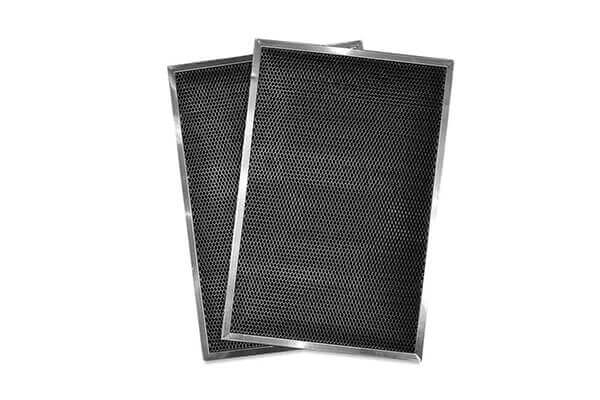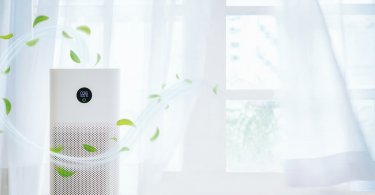Air filters are like guardian angels in your HVAC. They protect you from pollutants and allow you to breathe fresh, clean air. Electrostatic air filters are one of these, but it’s important to know everything about them before you make a purchase.
How do they work? Why and how are they different from other types? How do you maintain them? Read on to know the answer to these questions and much more!

What is an Electrostatic Air Filter and How Does It Work?
An electrostatic air filter is a washable filter, which traps dust and other particulate matter to keep the air clean. They’re made up of either a metal mesh or synthetic stuff like polyurethane and polypropylene and are available in all kinds of sizes.
These filters work by using oppositely charged ions to trap air particles. There are multiple layers of metal or synthetic material in these filters, creating static electricity as air passes through them.
So when the air first enters the filter, a layer of mesh positively charges its particles. As these positive particles travel further into the filter, negatively charged layers attract them.
As a result, these particles of dust and other pollutants get stuck on the surface of the filter. It’s similar to how your hair starts sticking to everything during winter.
But that’s not where it ends. Electrostatic filters have several positively and negatively charged layers. So once the first few particles are trapped, another layer creates a positive charge within the air again.
After this, yet another negatively charged layer successfully traps the pollutants, and this goes on for several layers until most of the dust is filtered out.
Related article: What Is a Furnace Filter and Why Do You Need One?
Electrostatic Air Filter vs. Washable Air Filter vs. Reusable Air Filter
An electrostatic filter can fall into two categories: washable or disposable. The washable kind is usually a flat panel with an aluminum frame and comes in various sizes for different vents and furnaces. You can use them for up to five years.
On the other hand, you have to replace disposable electrostatic air filters every one to three months, as they have a shorter lifespan.
You might also get confused between a washable or reusable filter, but technically, they’re the same. They both utilize static electricity to trap particles and are washable. Hence, you can reuse them for several years.
However, when purchasing air filters, pay attention to the material they’re made of.
A metal mesh filter has layers of aluminum screens that are electrostatically charged, while others are made of synthetic materials.
Both kinds are washable, but metal mesh electrostatic filters are more durable. However, this also means that they’re not as effective as synthetic electrostatic filters and are usually used as prefilters.
Electrostatic Filters vs. Disposable Filters
Electrostatic filters use static electricity to filter air, which is an entirely different method compared to regular disposable filters. The disposable ones are pleated filters, which use multiple layers of filter media to mechanically trap smaller particles like mold spores, etc.
Also, electrostatic filters have an aluminum frame, which makes them more sturdy than the cardboard frame of disposable ones.
As the name suggests, you will have to replace disposable filters every one to three months, depending on your house’s air quality. You can purchase a replacement filter easily, as they have a price range of $15 to $30.
On the other hand, electrostatic filters are washable and can be used for years altogether. But this also means that they are costly, with an average price of $100.
Moreover, electrostatic filters usually have a lower MERV rating. So if you have allergy-prone individuals, using the disposable kind would be a better idea.
Read more: Electrostatic Furnace Filter vs. Disposable Filter
The Pros and Cons of Electrostatic Air Filters
After comparing them with disposable air filters, you might be confused. Should you invest in electrostatic air filters? We’ll let you decide for yourself with the list of pros and cons below:
Pros of Using Electrostatic Filters:
- Budget-Friendly: These filters may cost you more initially, but think about it this way: would you rather spend 100 dollars once every one to five years, or 15 to 30 dollars every couple of months? You can do the math for yourself and realize that electrostatic filters are budget-friendly in the long run. Hence, they’re a good idea if you’re not willing to spend a ton on filters.
- Good for Filtering Dust: If you don’t have any allergy-prone individuals in your home, electrostatic filters will work just fine for you. They have low MERV ratings but are capable enough to effectively trap dust and larger particles that affect air quality.
- Reusable: Is the filter full of dust? No worries! Just wash it with water, and you’ll have a filter that’s good as new. That’s another great thing about washable electrostatic air filters – you don’t have to worry about replacing them every month or so.
- Eco-Friendly: What everyone will appreciate about electrostatic filters is that they’re recyclable. However, disposable filters contain fiberglass that is not recyclable or even biodegradable.
Cons of Using Electrostatic Filters:
- Low MERV Rating: For filtering out allergens, bacteria, etc., you want a filter with a MERV rating between 10 to 16. But electrostatic filters are only good for larger particles, as they have ratings of 5 or less. So they’re not very effective for people with asthma or allergies.
- Maintenance: You may like the fact that they’re reusable, but you’ll have to wash electrostatic filters every month or so. Otherwise, they can quickly clog up with dirt and dust, which makes them pretty useless.
- Reduce Air Quality: Since they tend to clog up when not maintained properly, these filters can actually reduce the air quality, pushing the accumulated dirt and dust into the air. Plus, air purifiers that use electrostatic precipitators create small amounts of ozone – a gas that’s harmful to the lungs.
How to Clean an Electrostatic Air Filter?
You can wash an electrostatic air filter following the simple steps below:
- Once every month, turn off the system and use a vacuum cleaner to suck out the debris. You won’t even have to take out the filter to do this – just start vacuuming while it’s in place.
- However, dirty filters can be stubborn, so you’ll have to wash them every three to six months, depending on how bad they look. Take out the filter from the system and use a water hose to wash out any residue clinging to the mesh. Make sure you spray the side opposite to the airflow first, so you don’t push any stuff deeper into the layers. After this, you can spray water in the direction of the airflow.
- Pro tip: try washing your filters with soap and water every six months. This will eliminate any germs and bacteria that may have accumulated on the mesh over the past months.
Once you have washed your filters, leave them outside to dry for 15 to 30 minutes before placing them back onto the vents.
Electrostatic Filter FAQ
What Are Electrostatic Filters Made of?
Typically, these filters are made of a metal mesh (usually aluminum), with an aluminum frame that fits into your vents. They are also available in polyester or polypropylene varieties, which are washable and reusable as well. All of these types utilize static electricity in their layers to catch particles.
What Is the Merv Rating of Electrostatic Filters?
MERV means minimum efficiency reporting value – a scale that ASHRAE developed to measure the filtering capabilities of filters. An electrostatic filter usually doesn’t have a rating higher than 5 or 6, while other high-efficiency filters have ratings between 10 to 16 and even higher.
How Long Do Electrostatic Air Filters Last?
The best thing about these filters is that they’ll last you for years to come. They have a lifespan of anywhere between three to five years, though some brands claim ten years of performance.
This is why washable electrostatic filters are often termed as ‘permanent’ filters.
Related: Best Air Purifiers with Permanent HEPA Filters
What Size of an Electrostatic Filter to Use?
Filters are available in standard sizes, ranging from 10 x 20 to 25 x 25 inches. If you don’t find the right size for your model, you can contact most companies to build a custom filter for you.
Always measure your system’s vent size to buy the correct filter, rounding off to the nearest whole number. So if the length is 15.5, round it off to 16.
Do Electrostatic Air Filters Really Work?
It all comes to performance, doesn’t it? While it’s undeniable that electrostatic filters are nowhere near as efficient as HEPA filters, they work well for lightweight dust particles.
So unless you are severely allergic to mold spores and pet dander, electrostatic filters will be good enough to maintain the air quality in your house.
How Expensive Are Electrostatic Air Filters?
The price range of these filters varies widely, depending on the size and depth of the mesh. Generally, though, expect to pay $80 to $100 for one filter.




